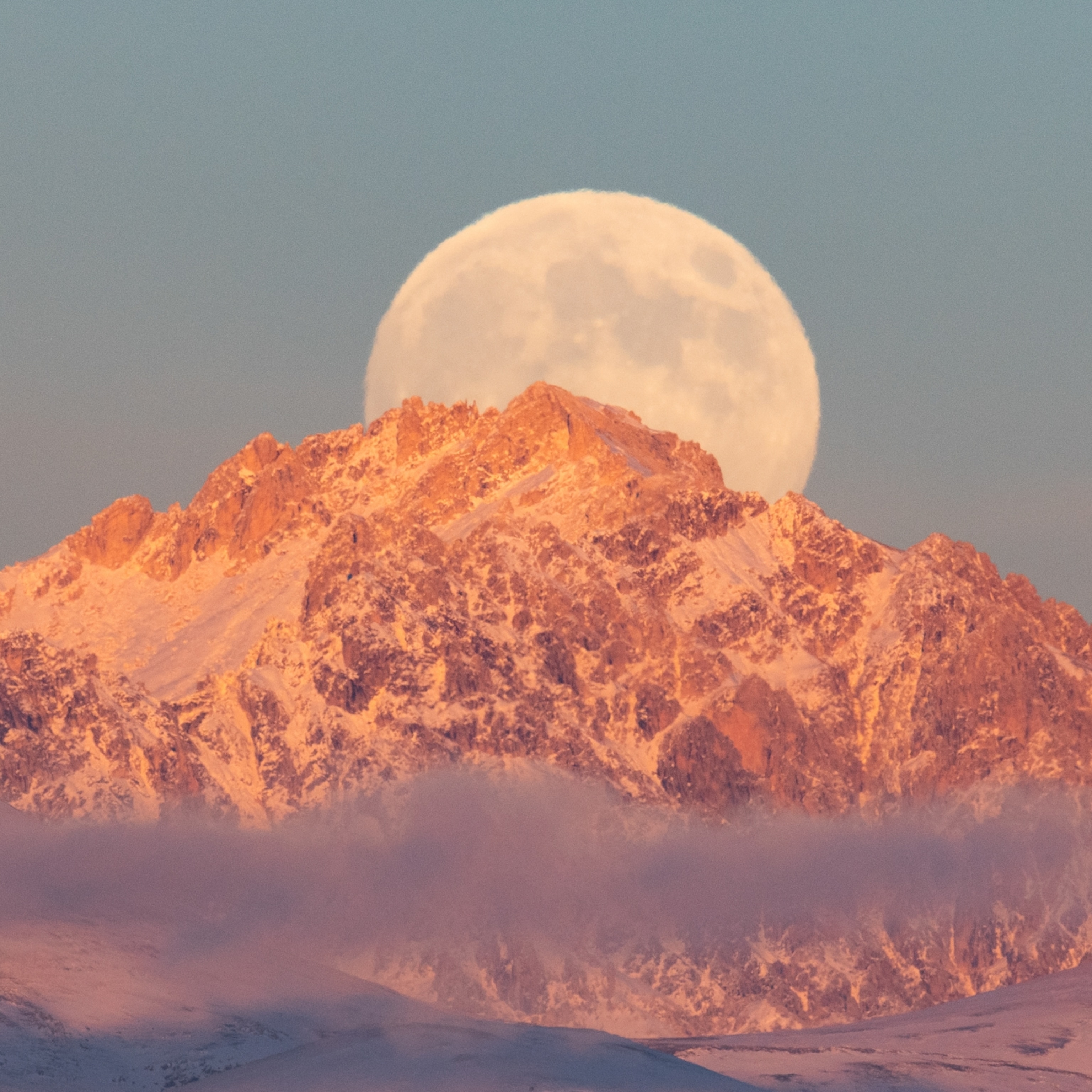
Why this year’s Perseid meteor shower will be one to watch
If you can get away from light pollution and hazy skies, the dark moonless night should provide near-perfect viewing conditions at peak. Here are when and where to see it.
One of the year’s most dazzling meteor showers—the Perseids—is set to reach its peak on August 12. In many places, the skies that night could be ideal for catching hundreds of falling stars.
When viewing conditions are good, Perseid-watchers can expect to see as many as 30 to 100 meteors blazing overhead each hour.
“The most important thing for observing meteor showers—besides getting the day and time right—is ensuring that you have the absolute darkest sky that you can,” says Edward Murphy, an astronomer at the University of Virginia. “There are really two things that play into that. One is light pollution, and one is what the moon is doing.”
In any year, the celestial spectacle can be affected by the glow of bright lights from urban areas, as well as by air pollution, which can create haze that blocks fainter meteors from view. This year, observers in the United States and Europe might additionally be stymied by wildfires and their resulting smoke and smog.
But one of the biggest hindrances in other years—the moon—is being cooperative in 2021: The waxing crescent will set several hours before this year’s Perseids really begin. That means sky-watchers far from city lights and under clear skies should have the best possible dark-sky conditions.
How to see the Perseids at peak
Meteor showers occur because Earth periodically crosses through fields of debris shed by passing comets and asteroids. Zooming through space at more than 100,000 miles an hour, those debris particles collide with the planet’s atmosphere and burn up, creating what people colloquially refer to as shooting stars.
Visible every August for at least the past 2,000 years, the Perseids are produced by debris from comet Swift-Tuttle, a 16-mile-wide hunk of ice and rock that orbits the sun once every 133 years. Its debris stream contains fluffy, pebble-size chunks that are a bit larger than the particles in an average comet or asteroid debris stream, Murphy says. For that reason, they tend to produce brighter meteors called fireballs as they burn up overhead.
As a result, the Perseids are visible from anywhere in the Northern Hemisphere—even under the most light-polluted nighttime skies—as well as from parts of the Southern Hemisphere, assuming clouds, smoke, and hazes stay away.
“Unlike a lot of other, more minor meteor showers, it’s more accessible even to people who live in cities,” says John Barentine, director of conservation for the International Dark-Sky Association (IDA). “The brightest of the Perseids are sufficiently bright that they would be seen regardless of how much light pollution was in a place.”
Bagging this shower’s best displays does mean staying up quite late—which isn’t necessarily onerous during the Northern Hemisphere’s warm summer months.
“I think that’s probably the biggest mistake that people make when they go out to see a meteor shower: They go out as soon as it gets dark,” Murphy says. “The problem is, they’re a few hours too early.”
This year, what’s considered the Perseids’ official peak—when Earth passes through the densest part of the rubble stream—is predicted to occur during the day on August 12. That’s not exactly convenient for spotting anything stellar other than the sun. But like all meteor showers, the Perseids tend to really get going in Act II—after local midnight (or 1 a.m. in most of the United States because of daylight savings time), when the night side of Earth is facing into the debris stream.
“Think of it like an automobile that has a windshield on the side facing forward,” Murphy says. “You get more bugs on the front windshield than you do on the back window.”
Meteors are typically even more numerous closer to 3 a.m., although you could spot quite a few starting around 10 p.m., when the constellation Perseus starts rising in the northeast. For the best show, Murphy recommends trying to go out about 3 a.m. August 12 when meteors are typically most numerous.
You May Also Like
You’ll want to find a dark spot with a clear view of the sky, he says, and look toward the constellation Perseus in the northeast. Locating the Greek mythological hero is best accomplished by first spotting the constellation Cassiopeia, an extremely recognizable “W” or “M” formed by five bright stars. The middle two stars are aimed toward the slayer of monsters. Any meteors that appear to come from that direction are Perseids; the rest are interlopers.
Fading, falling stars
In general, Murphy says the Perseids can produce roughly a hundred visible meteors an hour—a number that’s calculated for the entire sky and is highly dependent on viewing conditions. Most people won’t be under pristine skies, though, and they can expect to see somewhere between 30 and 50 flaming fireballs crossing the sky during that time period.
But what about somewhere like the middle of Manhattan?
“Let’s say you went out to Central Park in New York City,” Barentine says. “You might see on the order of, if it’s a good year, maybe 10 to 20 per hour. You’re only going to see the brightest members of the Perseids, because the faint ones will all be below the threshold of the sky level.”
In 2016, scientists estimated that nearly 40 percent of the U.S. population was living under severely light-polluted skies, where city lights, glare, and sky glow prevent a clear view of the heavens.
Environmental pollutants can also bleach the nighttime sky. Barentine and his colleagues recently reported that eliminating urban air pollution can reduce nighttime sky brightness by as much as 40 percent—a hypothesis they were able to test when a cold front swept across Austria in 2019 and blew away much of the haze over Vienna for a couple of days. The resulting change in sky brightness closely matched their models.
Places like public lands, Forest Service land, park service, state parks—those are all good opportunities.
John Barentine, International Dark-Sky Association
Barentine hasn’t yet studied the effects of fire-borne hazes on sky glow, but he anticipates that the effects will be similar or worse than with standard urban air pollution.
“The little particles of smoke have optical properties that are a bit different than the kinds of particles we looked at,” Barentine says. “They tend to be, in many cases, smaller. And the smaller the particles get, the more effective they are at scattering light when they encounter it.”
In other words, smaller particles are better at both reflecting light from the ground and blotting out cosmic lights.
In addition to this year’s moonless sky, there is another piece of good news for those eager to spy the Perseids: Satellite megaconstellations launched by companies such as SpaceX and OneWeb are unlikely to muck up your viewing experience. The bright streaks from those satellites tend to be the least visible around midnight and the early morning hours, although you might still see a few of them marching faintly through the sky.
If you’re keen on watching the Perseids, several online maps might help you find your way to a good dark sky. Light Pollution Map overlays local sky brightness readings atop a global map. Dark Site Finder shows publicly accessible, high-quality observing areas. And Dark Sky Map crowdsources information about good viewing areas and distributes it on a mobile platform. As well, the IDA website shows recognized International Dark Sky Places.
Barentine warns that if you do head out toward a dark spot on one of these maps, don’t inadvertently pull over on private property.
“Just be mindful of that, so that you don't inadvertently find yourself on the other end of an upset landowner,” he says. “Places like public lands, Forest Service land, park service, state parks—those are all good opportunities, even if they’re not especially dark.”








